There’s something special about plants in our houses. They give us comfort and make our space more aesthetically pleasing, not to mention their ability to purify the air. Mostly we place plants somewhere where they can get enough bright indirect or direct sunlight. But what to do if you want to make the dark corners of your house more alive? Lucky for you, we have prepared a list of 15 houseplants that don’t need sun!
Best Tall Indoor Plants for Low Light
Snake plant
Snake plant is popular for various reasons; it’s beautiful and an excellent air purifier. The Snake plant doesn’t need too much attention; neglect isn’t a problem either, so it's generally a godsend for people who don’t have much time. It’s known for being extremely adaptable so that you can place it even in the darkest corner, and it will thrive. Water the plant every two weeks (in warmer seasons) and reduce it monthly during winter.
Choose well-drained, loose potting mixes, and pay attention to sandy soils. Potting mixes for succulent plants will be a great choice as well. The most optimal temperature range is between 70-90˚F (21-32˚C), and it can be harmful if temps drop below 50˚F (10˚C). It’s infrequent for this plant to bloom, but when it does, it has a lot of gentle, small white flowers that grow in clusters.
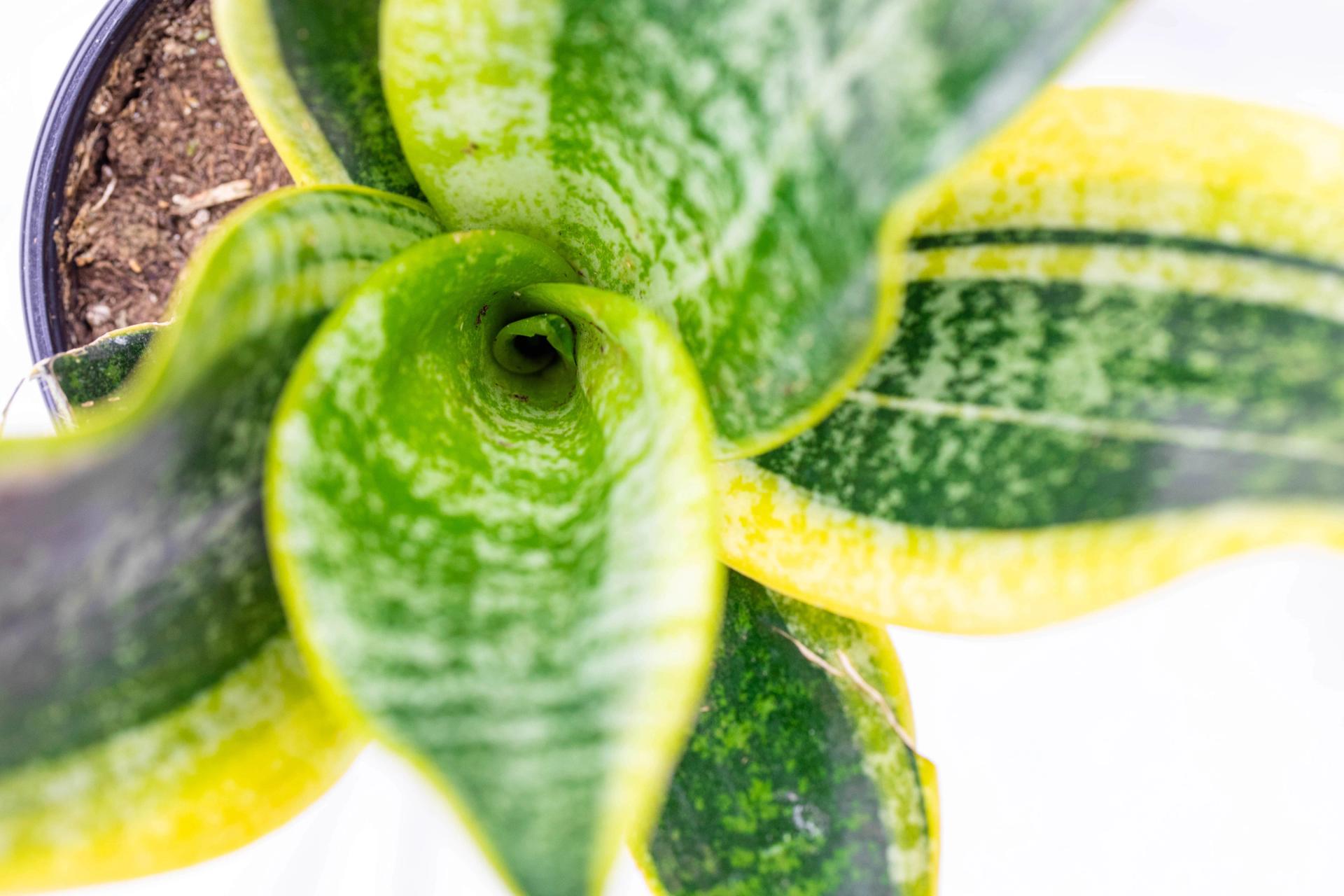
Dumb Cane (Dieffenbachia)
This tropical plant with broad and bright green leaves can tolerate low light. Such conditions will make its growth slower but won’t affect the plant’s health and appearance. Be careful with this green pet as it is poisonous and might harm children or animals if ingested. The best strategy for watering is to make it regular, but not too much.
Dumb Cane prefers well-draining soil with a significant amount of peat. Since this plant is tropical and fond of warmth, a temperature range between 62-80˚F (16-27˚C) is the most suitable. Its flowering occurs rarely, and its bloom is rather inconspicuous and somehow reminds Peace Lily’s flowers.
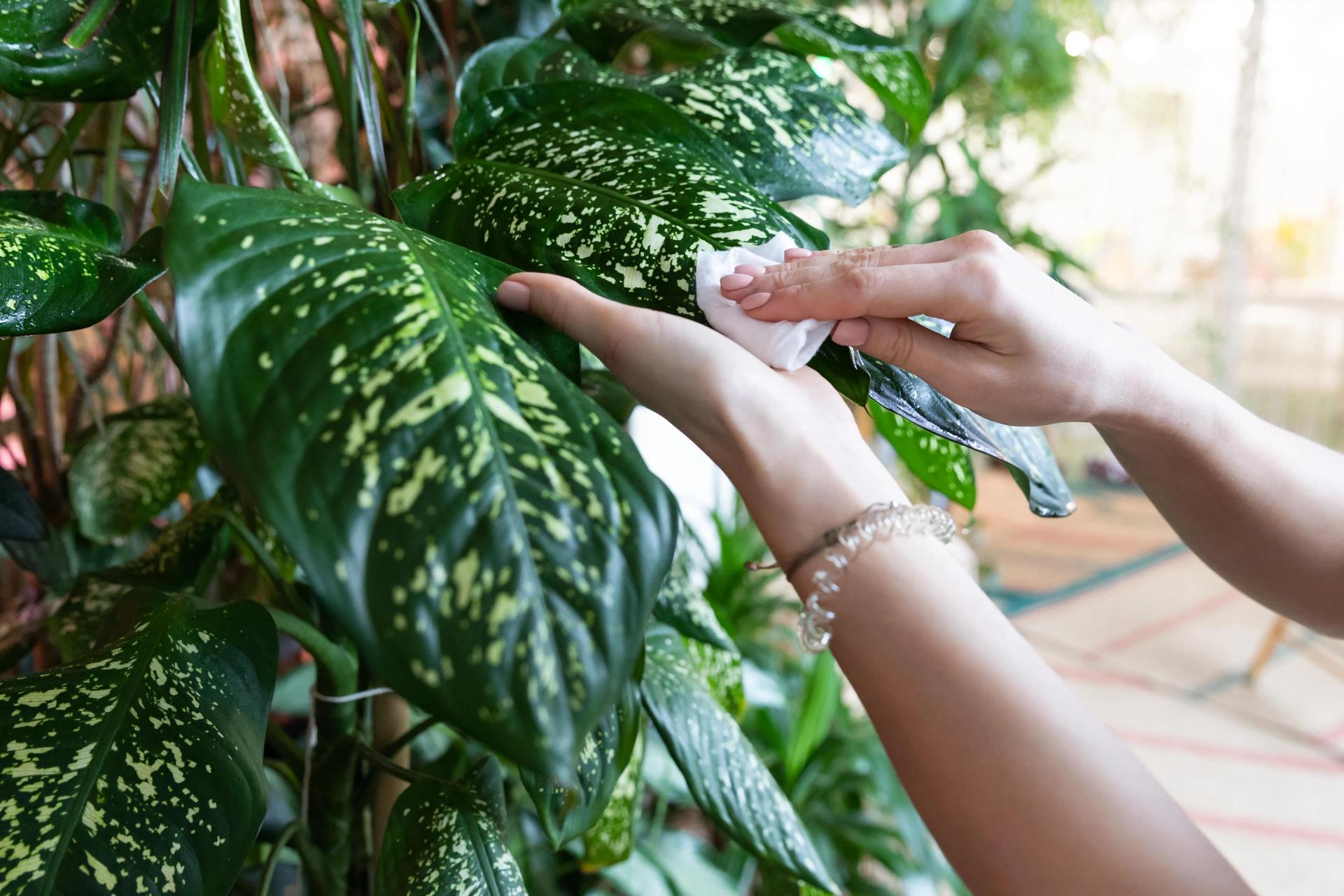
Monstera
It feels like everyone is obsessed with this plant because of its beauty. And the fact that Monstera is so easy to take care of is an excellent addition to its appearance. It generally prefers indirect bright light, but it won’t mind a low amount of it. Water the plant only when most of the soil is dry.
Ligh soil mixes with peat moss, pine bark, and perlite are the best options for this green beauty. The most suitable temperature range is 60-80˚F (16-27˚C), and in no case, it should be lower than 55˚F (13˚C). Monstera blooms only in its natural habitat or in a place that mimics its natural surroundings, so it’s rare luck to have it blooming at home.
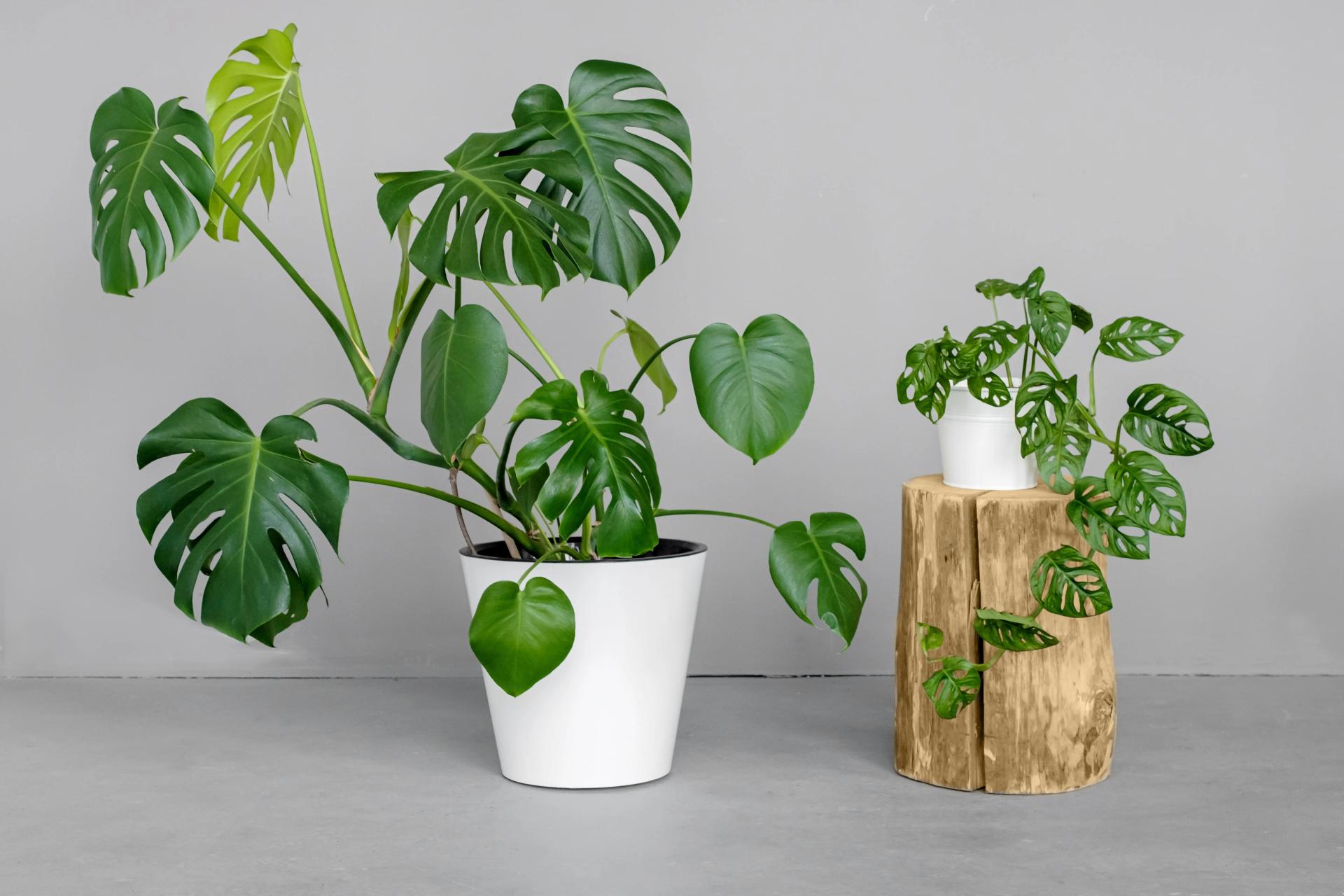
Indoor trees that don’t need light
Janet Craig
This plant is so unpretentious that it will thrive in almost any condition. Low light isn’t a problem for it all, making this plant suitable for nearly any location. Janet Craig can tolerate many things, but soggy soil isn’t one of them, so be careful with watering. Loose and well-draining potting mixes are the best for this plant, and you can also add perlite or gravel. Temperatures of 65-80˚F (18-27˚C) work well for Dracaena. Finally, this species blooms with large white flowers that aren’t only pretty but also fragrant.

Dragon Tree
This plant can be placed literally anywhere because it’s tolerant of low-light conditions. But sometimes, lack of light affects its coloration and pace of growth. In a low-light location, Dragon trees also need less water. The best strategy for watering is to check the topsoil. If it’s dry, then it needs water. Well-draining loamy soil will optimize the development of the plant.
Keep the temperatures between 70-80˚F (21-27˚C). Also, this plant is fond of humidity, so if the air is dry, mist it every few days. Interestingly, this plant needs seven to fifteen years to produce flowers.
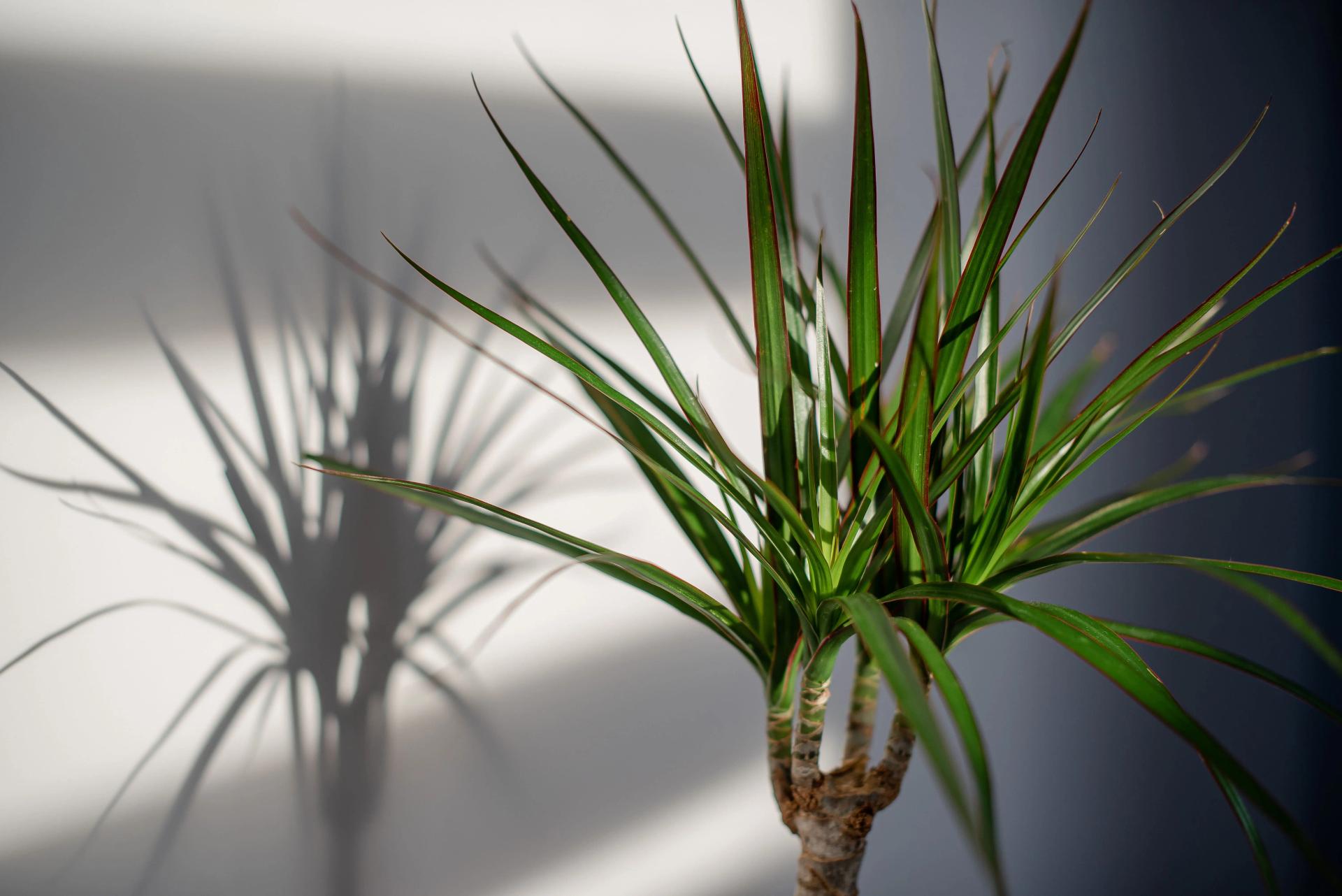
Rubber Tree
This tropical plant is unusually tolerant to low light because of its adaptability. But remember, low light doesn’t mean any light at all. It’s better to locate it in a room with windows. When it comes to watering, once a week is enough. And before the next watering, let the top layer of the soil dry out. Well-draining and well-aerating potting mix is the key to making the Rubber plant thrive. Avoid cold drafts and temperatures below 55˚F (13˚C) with this plant; the most suitable temperature range is 75-80˚F (24-27˚C) (during the day) and 60-65˚F (16-18˚C) (at night). This plant is theoretically capable of producing flowers, but it happens very rarely.
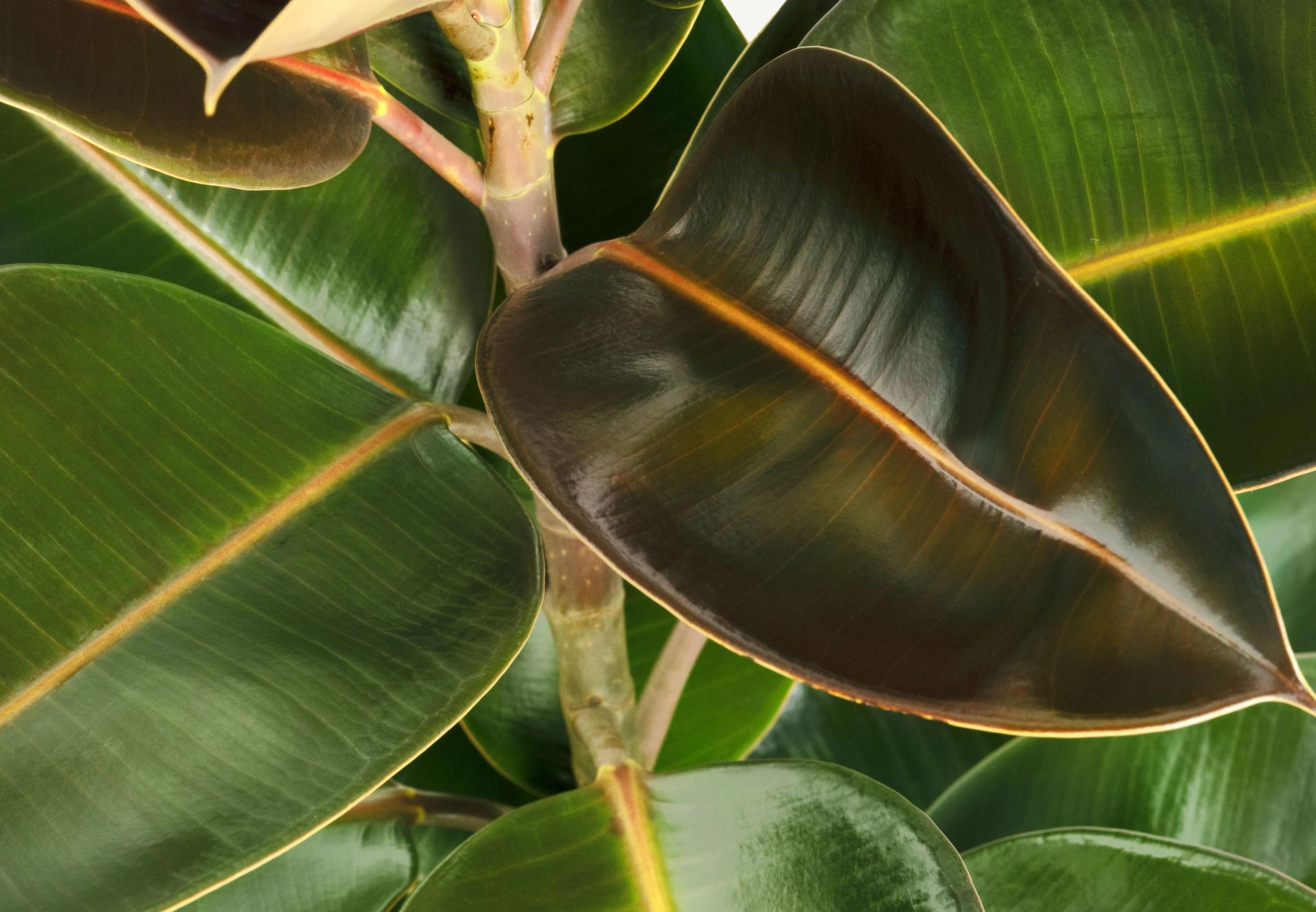
Other plants that don’t need sunlight indoor
Spider plant
Spider plants can be considered houseplants that don’t need sun. Well, for optimal growth, this plant needs bright indirect sunlight, but low light isn’t a big deal for it since it’s so adaptable. Water it once a week in spring and summer and less in winter. This plant can adapt to almost every potting medium, but well-draining, loamy, and moist soil is the best.
As for temperatures, the Spider plant can abide even 35˚F (2˚C), but low temperatures will affect its growth, so the best range is between 70-90˚F (21-32˚C). Spider plant blooms with tiny white flowers located at the end of the stems, so there is a chance to observe its pretty bloom.
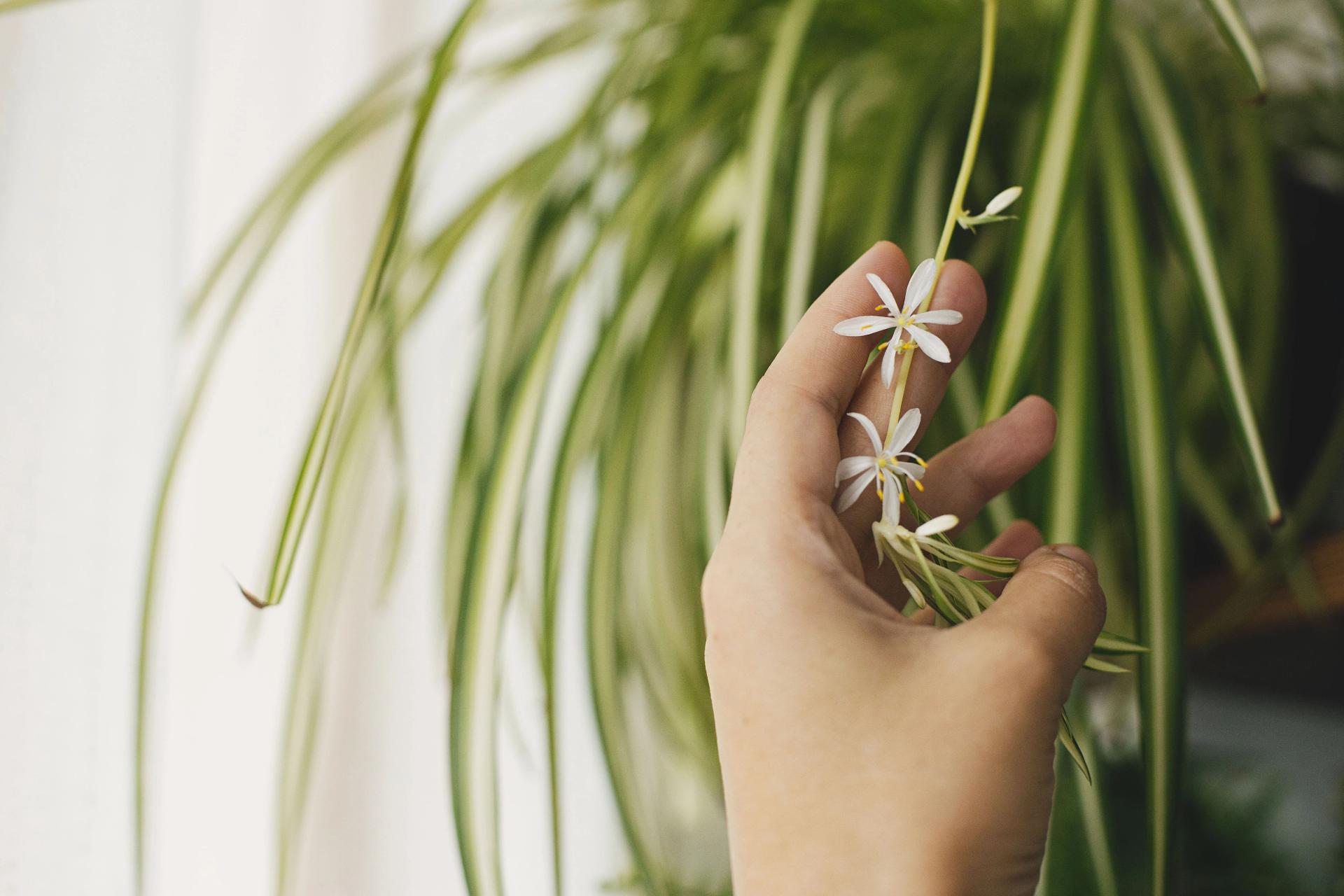
Bromeliads
In their native habitat, tropical bromeliads prefer shady areas. And this means that they are suitable for low light conditions, especially Vrieseas, Nidularium, and Guzmania genera. But at the same time, they require a higher level of humidity, so water them once a week and keep the soil slightly moist but not soggy.
Choose a well-draining potting mix for these species. These plants are very adaptable to different temperatures. However, the range between 70-90˚F (21-32˚C) (during the day) and 50-65˚F (10-18˚C) (during the night) is the best. Bromeliads’ bloom is a beautiful bonus to their spectacular foliage, but these plants flower only once during their lifespan.
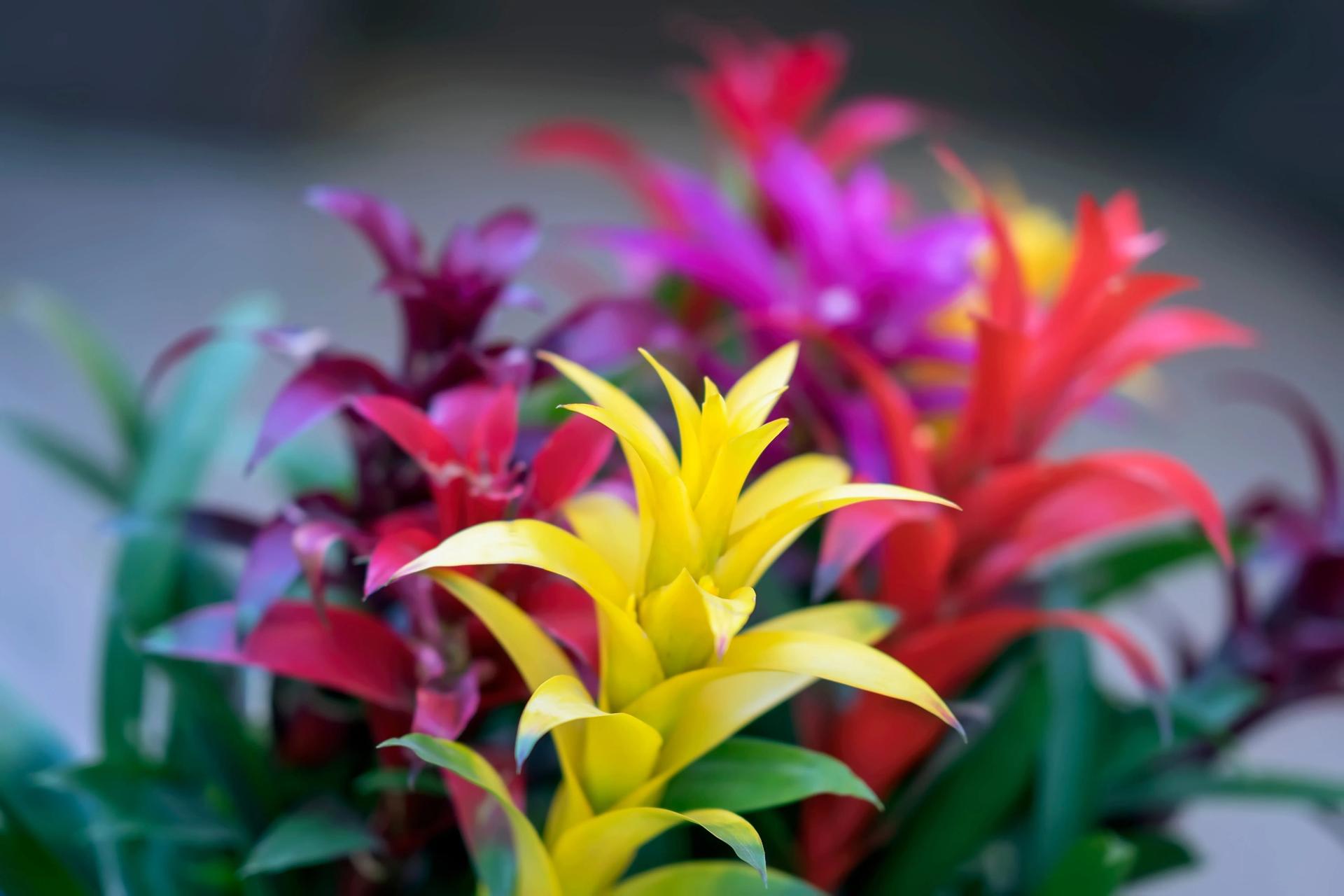
Aglaonema (Chinese Evergreen)
Aglaonema is a houseplant that doesn’t need sun. It is the right decision if you want to make darker rooms of your apartment more colorful. Water it only when the top of the soil is dry, and give preference to well-draining potting mixes.
The temperature should be kept between 70-85˚F (21-29˚C) during the day and about 60-75˚F (16-24˚C) at night. Aglainema’s flowers remind the ones that Peace Lily has, but they are not flashy at all.

ZZ plant
These plants do very well in bright indirect sunlight, but at the same time, they are the best plants for rooms without windows. If you are a serial plant killer, try ZZ because it can survive without water for months! Water it only when the substrate dries out completely. In low-light environments, modest watering once a week is just enough.
Proper drainage is vital for the ZZ plant, so choose well-draining potting mixes. Substrates for succulents will suit best. In areas with average humidity, the best temperature range for this plant is from 60-70˚F (16-21˚C). Even though these plants are considered flowering ones, they rarely produce flowers. And if they do, their bloom is tiny and almost unnoticeable.
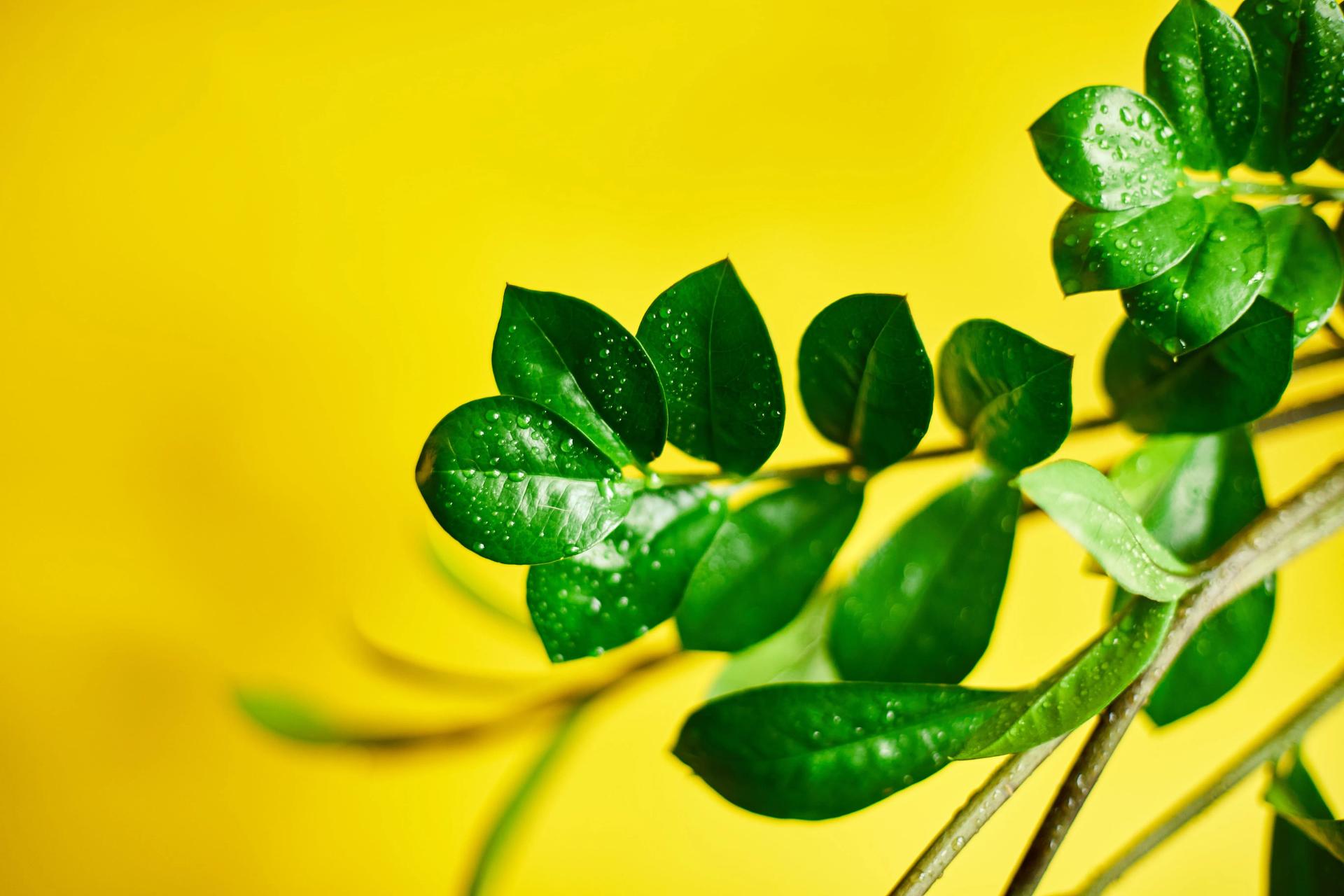
Pothos
In terms of lighting, Pothos isn’t picky at all! You can place it even in the bathroom, and it will thrive. These plants are prone to overwatering, o use a rule of thumb and check the soil before pouring water. Pothos is also undemanding regarding the soil it grows, but we would recommend sticking to a universal potting mix. This plant is hardy and adaptable to different temperatures, but the best range is 70-90˚F (21-32˚C). Indoors, the species doesn’t tend to flower, but it is compensated by its stunning foliage.
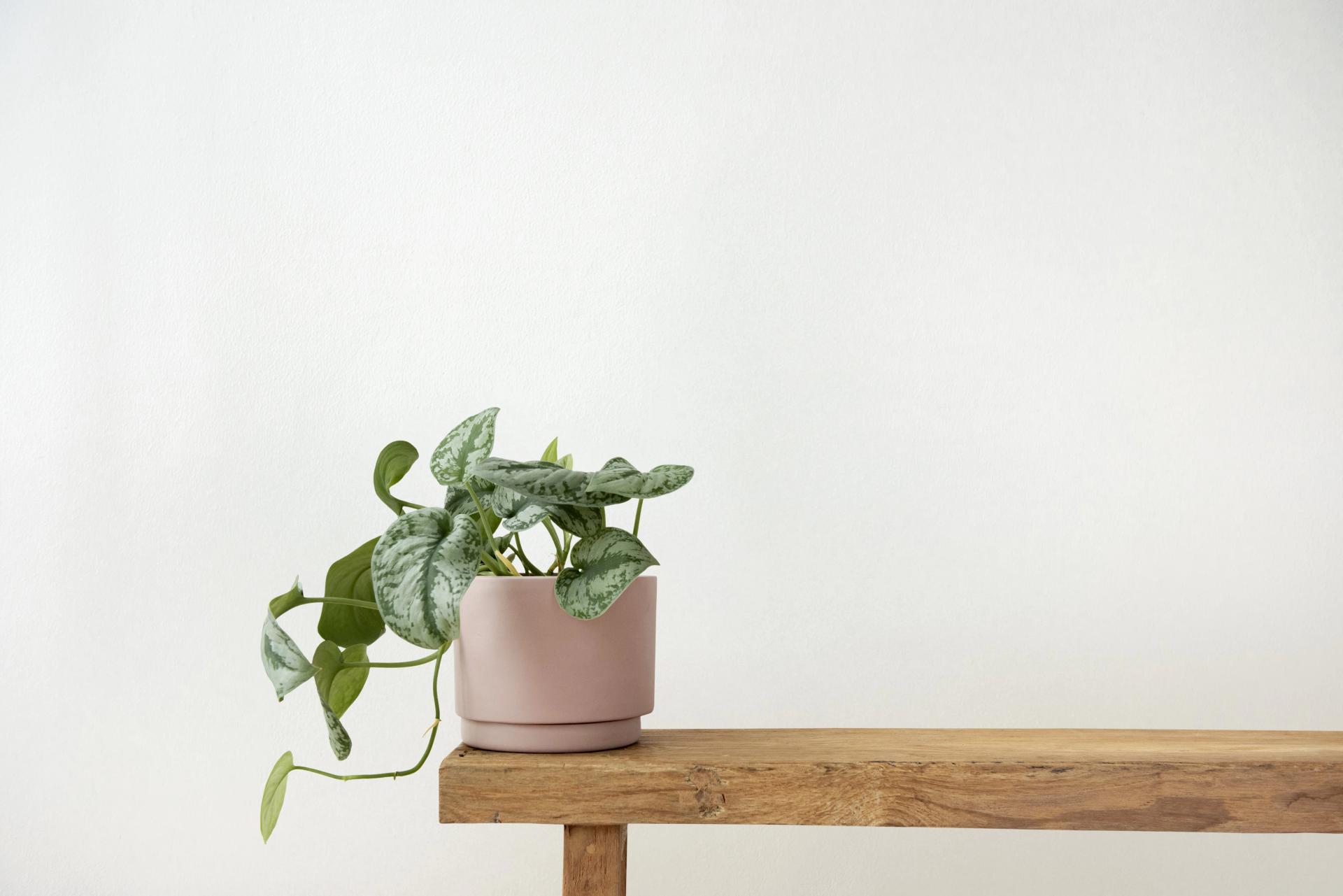
Maidenhair Fern
Some ferns can be considered plants that don’t need sunlight indoors, for example, button fern, rabbit’s foot, Autumn fern, etc. And Maidenhair is one of such shade-loving green pets. It grows under the shade of trees in its natural habitat, so indoors, you need to mimic such conditions. To be in good shape, this plant needs regular watering. Never let the soil dry out completely. This delicate fern needs a well-draining potting mix that should be kept evenly moist.
Maidenhair fern, a house plant that doesn’t need sun, loves humidity and warmth, so the best temperatures are above 70˚F (21˚C). As for flowers, ferns can bloom only in Eastern-European folklore, but in real life, they reproduce via spores.
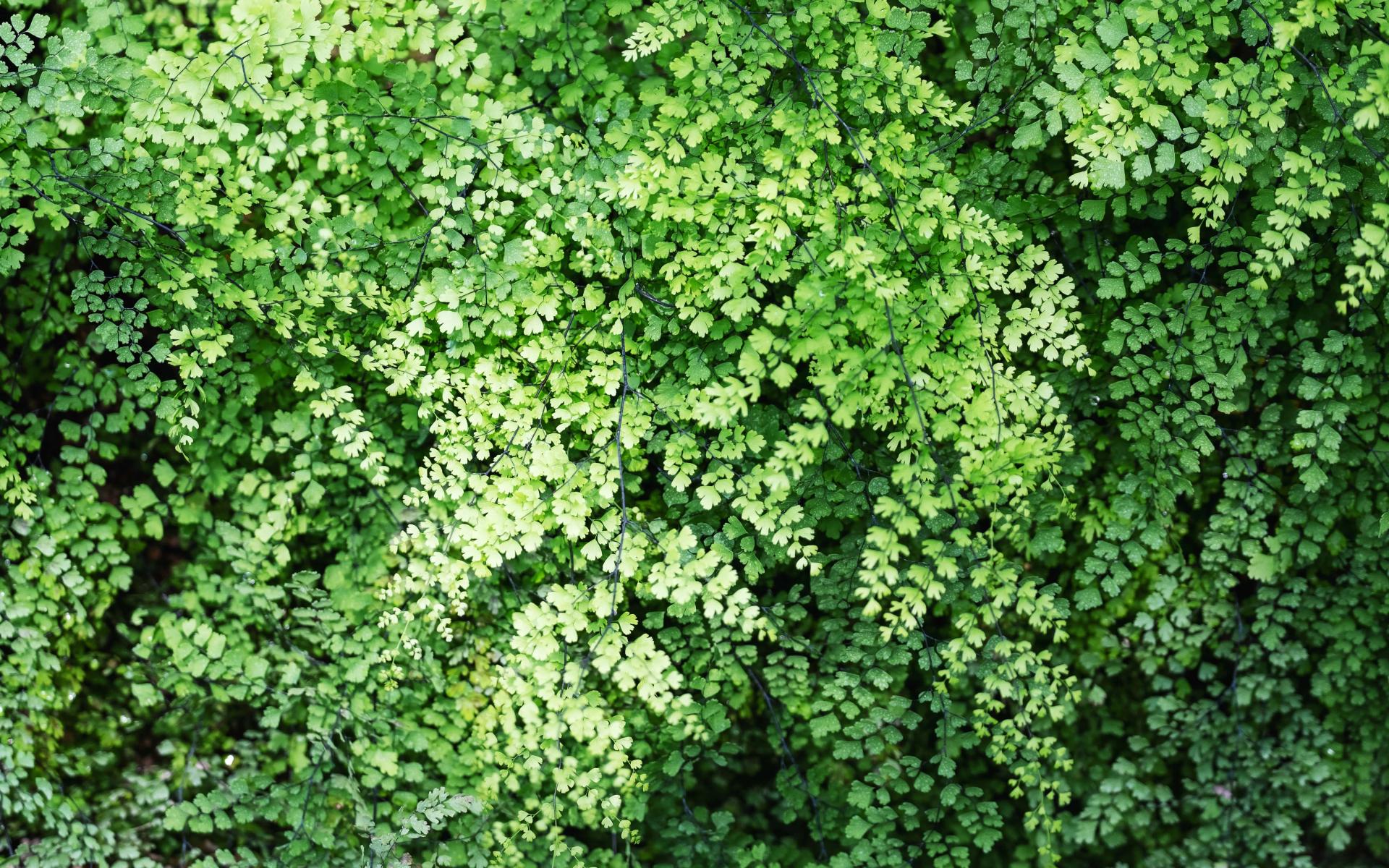
Ivy
This plant’s assertive nature and beauty made it famous because it can cover the ground and climb 80 ft high! So no space is wasted with ivy. Since ivies can grow everywhere, they are considered good house plants for low light, especially Algerian and English varieties. This plant isn’t problematic, but don’t forget to water it once a week. Choose well-draining and loose soil for this houseplant, and keep the temperatures from 65 to 85˚F (18-29˚C). In fall, mature ivy produces small flowers of green and white colors.
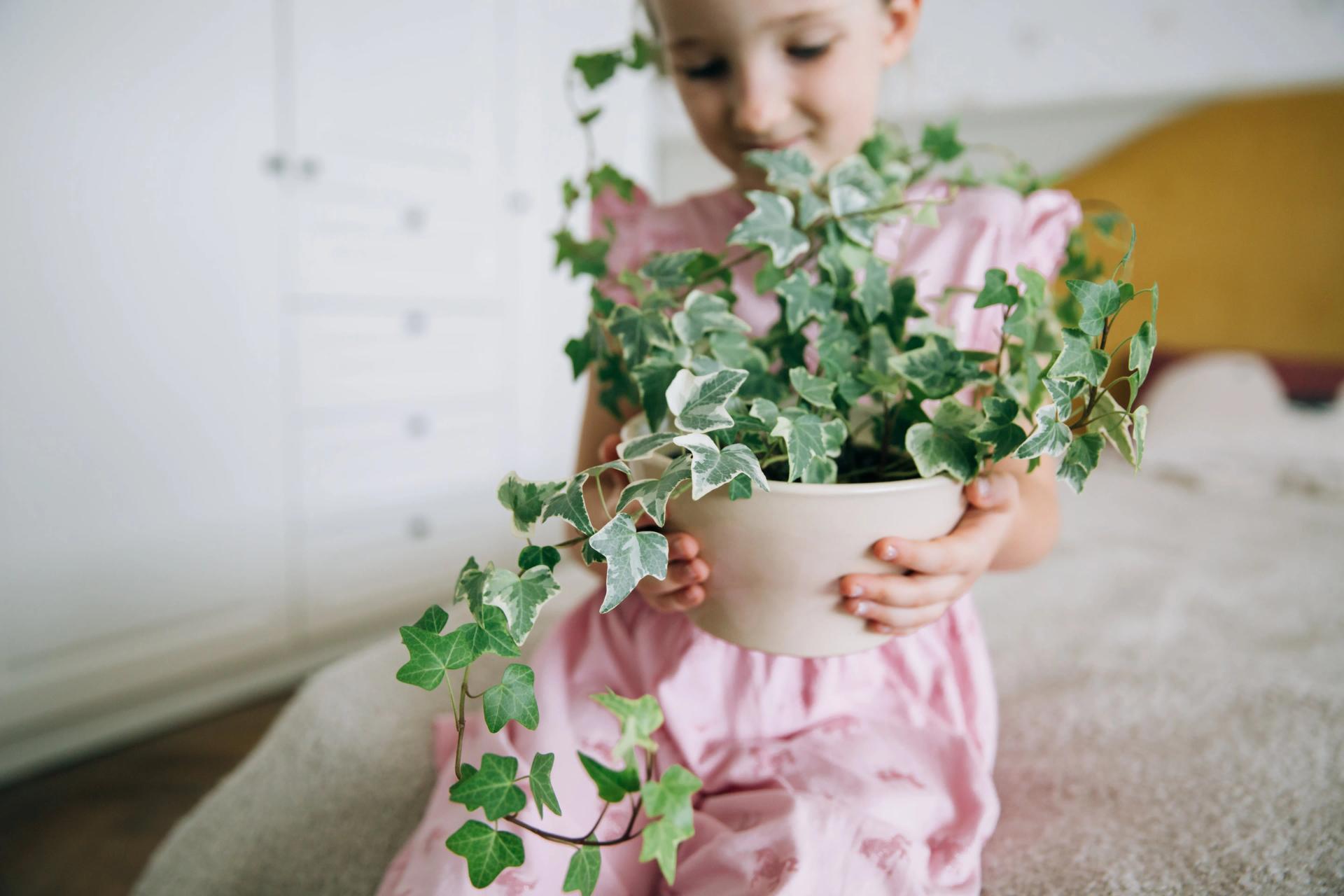
Fragrant indoor plants for low light
Mint
Since this herb prefers shade, it is an excellent choice for growing indoors under low-light conditions. In general, these small indoor plants that don’t need sunlight to have a beautiful fragrance and are so easy to grow. Watering is the key to success as mint likes moist substrate. Water it when the topsoil is dry and keep the soil evenly moist.
Thinking about the potting mix, the best option is to mix equal amounts of peat, sand, and perlite, but mint can be grown even in a bottle of water! To make the plant grow fast, keep the temps of 65-70˚F (18-21˚C) during the day and 55-60˚F (13-16˚C) at night. Mint has tiny fair purplish flowers, and it blooms when the plant is ready for reproducing.

Peace Lily
If you want to buy indoor flower plants that don’t need sunlight, then Peace lily will be there for you! This plant will make any dark corner more cheerful due to its low-light tolerance. And also, its white flowers have a light and pleasant aroma. This houseplant enjoys regular watering – once a week is enough, but it can reduce to every two weeks in winter.
Loose and rich potting soil with loam, perlite, peat moss, and coir is a recommendation for this species. The best temperature range is between 68-85˚F (20-29˚C) during the day, and it can be slightly cooler at night. Healthy Peace Lily will delight you with an elegant bloom twice a year.

FAQ
Are There Indoor Plants That Don’t Require Sunlight?
As you noticed when reading this article, there are a lot of plants that grow indoors without sunlight. However, none of the plants can live without light at all as they are dependent on photosynthesis.
What Plants Are Good for Rooms With No Light?
The most suitable one is the Spider plant. Ivy, Snake plant, Maidenhair fern, and Peace lily will also feel well in such conditions.
Do Snake Plants Need Light?
This plant is very adaptable to harsh conditions, and lack of light isn’t a problem for it. But when it receives more indirect bright light, it starts growing faster.
How Do Indoor Plants Survive Without Sunlight?
Dark and shady rainforests are natural environments for a bunch of plants. They are used to such conditions because of evolutionary adaptations, making them suitable for growing in low-light rooms.
How Many Hours of Light Do Low-Light Plants Need?
Low-light plants usually need 2 to 4 hours of indirect light daily to stay healthy. They grow well in shaded areas, like near a north-facing window or a few feet from a bright one. Direct sunlight can scorch their leaves, so it’s best to keep them in gentle, filtered light.
